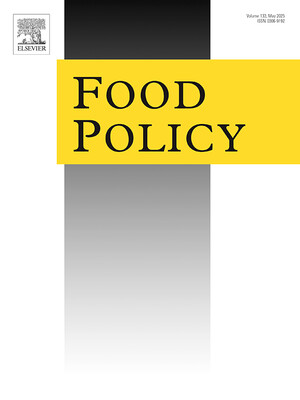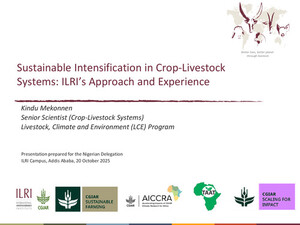
Participatory mapping of livestock routes and resources in southern woredas of Oromia and Somali regions, southern Ethiopia—Discussion
Citation
Berhanu, D. 2023. Participatory mapping of livestock routes and resources in southern woredas of Oromia and Somali regions, southern Ethiopia—Discussion. Presented at the dissemination workshop on livestock routes and resource maps in the southern parts of the Oromia and Somali Regions, Hawassa, Ethiopia, 23 October 2023. Nairobi, Kenya: ILRI.










